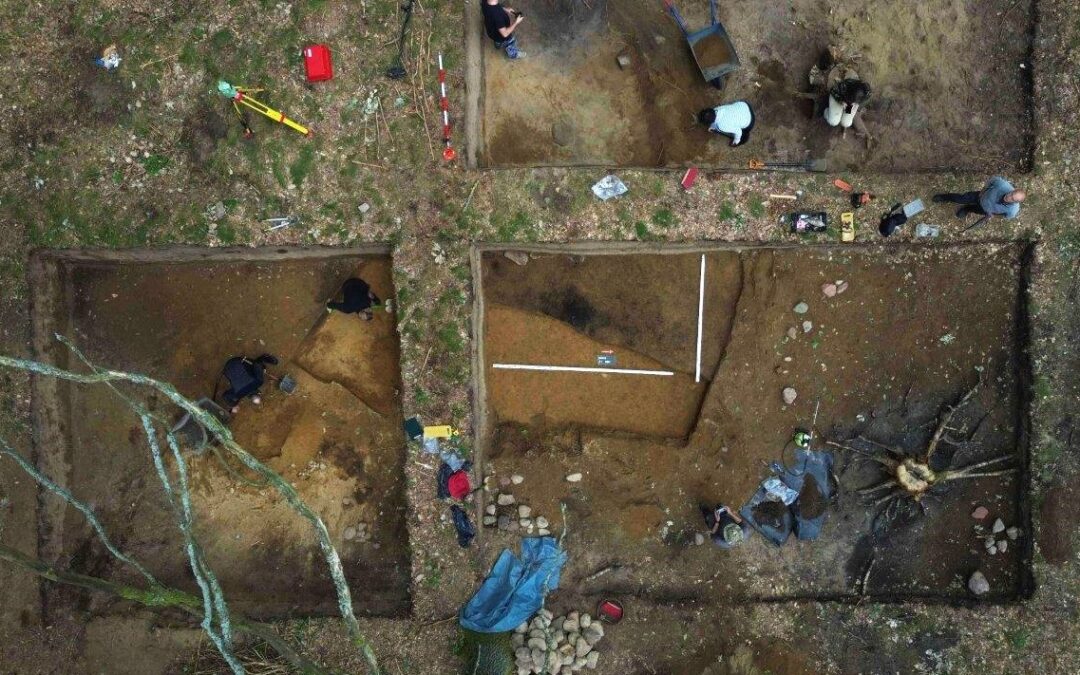Unique burial mounds, used by two different cultures in two different historical periods a thousand years apart, have been uncovered in Poland.
The mounds are believed to have been originally created almost 3,000 years ago by the people of the Lusatian culture. A thousand years later, the same site was also adopted as a burial site by the first Goths to arrive in the area.
The site was discovered after a couple requested that archaeologists from a museum in the city of Koszalin in northern Poland investigate the forest next to their plot of land in the village of Rekowo.
Andrzej Kasprzak, the archaeologist who led the excavation on behalf of the museum, told the Gazeta Wyborcza daily that the couple were particularly intrigued by unusual hill-like formations in the forest.
“They urged me to see them. They were right – there were burial mounds. I counted at least 14 of them,” said Kasprzak. “When I looked at the digital terrain model, also known as LIDAR, it turned out that there are another 14 right next to it.”
“This is perhaps not the largest concentration of this type of construction…but there are very few places where we have recorded 30 mounds.”
— walszat (@WalSzat) August 27, 2023
According to Kasprzak, the burial site was likely erected around 700 BC, a theory supported by grave constructions and pottery fragments that were also found at the location. He believes it was built by the people of the Lusatian culture who at the time inhabited this part of what is now Poland.
Kasprzak believes that, almost one thousand years after its construction, the first Goths to arrive in the area found the visible burial mounds and decided to use them as well. They dug their graves into the existing embankment, and then filled it, increasing its height and diameter.
The team from the Koszalin museum discovered that they were not the first to excavate the site, as Kasprzak also revealed that some of the graves buried in the mound had been previously opened. “It is not known for what purpose, whether for robbery or ritual.”
One of the disturbed graves had been dug up relatively recently, as it was discovered with a large hole in its centre. In this particular grave, the team found fragments of pottery, chronologically matching the examined embankment.
The grave of a "vampire child" – who was turned face down and secured with a padlock to ensure he could not rise from the grave – has been discovered in Poland
Researchers believe the site was a cemetery for those excluded or feared by the local community https://t.co/Ez2QgvMnuX
— Notes from Poland 🇵🇱 (@notesfrompoland) August 11, 2023
A local resident told Gazeta Wyborcza that, after World War II, the area around Rekowo was commonly subjected to “pinnings”, where the ground is punctured with metal rods by those in search of valuables hidden during the war. Those working on the site have speculated that the recently disturbed grave could have been pinned in the postwar period.
The archaeological work began in July and lasted several weeks, with the team also being assisted by local volunteers. For now, the excavation has ended and the mound has been reconstructed and secured with thick foil and filled in.
“Next year, we’ll revisit what we’ve been researching now and begin exploring the final remaining quarter. I can’t wait. I would like to finish the study of this mound, and perhaps identify one more smaller embankment and a flat section of the site,” explained Kasprzak.
“Digging up all these 30 mounds is out of the question. That is a job for several decades, and huge resources would be needed for that.”
Archaeologists excavating the site of a medieval fortress in Poland have uncovered a collection of coins that are almost 1,000 years old https://t.co/Yg4gzmnsuQ
— Notes from Poland 🇵🇱 (@notesfrompoland) August 22, 2023

Notes from Poland is run by a small editorial team and published by an independent, non-profit foundation that is funded through donations from our readers. We cannot do what we do without your support.
Main image credit: Muzeum w Kosalinie/Facebook

Anna Hackett is an assistant editor at Notes from Poland. She is a recent graduate of European Studies from Trinity College Dublin and has had previous journalistic experience with the Irish Independent News & Media group.



















